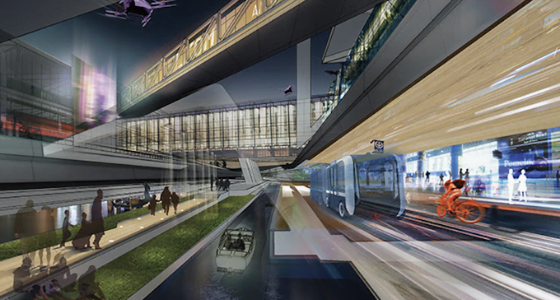An emphasis on incorporating futuristic transportation options, mitigating the risks of diseases and creating zero-emissions airports were among the themes of the 22 designers named to the shortlist for the 2020 Fentress Global Challenge (FGC), the annual international student airport design competition.
This year’s competition, which challenged students to envision airport mobility in the year 2100, received more than 100 entries from around the world that were judged by a panel of architects and designers at Fentress Architects.
Several submissions built upon recent developments in futuristic transportation—from the Hyperloop to autonomous vehicles—to imagine the airport of the future as a multimodal hub equipped to handle next-generation aircraft, space travel, and even the replacement of aircraft with self-flying autonomous pods.
The spread of COVID-19 and other infectious diseases, which may be more prevalent in 2100, also played a key role in other shortlisted designs with an emphasis on fully touchless airports as well as terminals that have dual functions as “healing hubs.” A number of submissions also utilized futuristic solutions to develop zero-emission airport facilities, including terminals reimagined as greenhouses, and decentralized air purifying towers.
“Each year I am ever more impressed by the vision, creativity and practicality set forth by these young architects,” said Curtis Fentress, principal in Charge of Design at Fentress Architects, who spearheaded the creation of the contest in 2011. “This year’s shortlist couldn’t be more diverse; they range from a modular floating terminal to a self-growing airport integrated into the site’s ecosystem. Each concept pioneers creativity, advances innovation and recognizes real solutions that would enhance the passenger experience of 2100.”






